As the battle lines converged on Berlin in the waning days of World War II, fighting and violence erupted at several points across liberated Europe. In Athens, Greece, the bloody events of Sunday, December 3, 1944 initiated a brutal civil war, worse than anything the continent would see for another half-century.
German forces had evacuated Athens just six weeks earlier. Now, weak British forces and Greek police struggled to maintain order in a city rife with suffering and discontent. Shortly after sunrise, angry civilians marched toward the city center. Police tried to block them, but their barricades collapsed as the demonstrators—many of them women—swarmed through the central square and converged on Premier George Papandreou’s apartment building. A grenade exploded in the crowd as enraged demonstrators stormed the building. The premier cowered in his bedroom until his armed guards drove the attackers back outside.
Later, a crowd waving Greek, Soviet, British, and American flags assembled outside a police station. Panic-stricken, police steadily pulled back until an armed man in uniform rushed out of the station, yelled “Shoot the bastards!” and dropped to one knee, then opened fire on the crowd. The policemen followed suit. Civilians fell screaming—12 dead, more wounded—and others fled. British paratroopers, ordered not to intervene, watched these events nervously from nearby.
ELAS fighters in mountainous Greece. Courtesy of the Greek Ministry of Foreign Affairs, 251010_NA1903.
These dramatic events marked the culmination of three long years of suffering for Greece. During the Axis occupation of the country from 1941–1944, nearly 100,000 people died of starvation. Resistance had begun slowly against German, Italian, and Bulgarian troops and interests. By 1942, however, Greek resistance groups, including supporters of the deposed regime of Ioannis Metaxas and other conservatives; and leftist radicals, especially communists, had begun fighting the occupiers—and each other. Eventually the communists coalesced with other factions into the National Liberation Front (EAM) and its formidable National Popular Liberation Army (ELAS.) The ELAS wiped out numerous rival opposition groups even as they fought the Axis.
The Greek government in exile opposed the EAM, as did the collaborationist government, which organized well-manned and equipped security battalions. These forces suffered proportionately far higher casualties in anti-partisan operations than did the Germans or Italians. Another large resistance group, the National Greek Republican League, or EDES, was anti-communist but opposed to the monarchist government in exile. The British covertly supported and supplied the EDES, because it fought both the EAM and the occupying forces.
By early 1944, British Prime Minister Winston Churchill feared that Soviet advances in the Balkans would lead to an EAM uprising and the installation of a communist puppet regime. At a meeting between Churchill and Soviet premier Joseph Stalin in Moscow on October 9, however, Churchill had suggested to his counterpart: “So far as Britain and Russia are concerned, how would it do for you to have 90 percent predominance in Rumania, [and] for us to have 90 percent say in Greece?” Stalin agreed informally, and would stick to the bargain.
Italy collapsed in the summer of 1943, and German forces began withdrawing from Greece in September 1944. As they departed, anti-communist factions coalesced to fight their common enemy. Nevertheless, the better-coordinated and utterly ruthless EAM seized control of much of Greece, except for Crete, by the end of the year.
Greeks celebrate the liberation of Athens, October 1944. Courtesy of the Greek Ministry of Foreign Affairs, 251010_NA1903.
British forces meanwhile prepared to occupy the major cities. Mediterranean Commander in Chief Sir Henry Maitland Wilson placed Lieutenant General Ronald Scobie in command of the 10,000-strong Force 140, designated to seize Athens in Operation Manna. The Germans departed only gradually, however, and they left behind intact supply dumps as well as arming security battalion garrisons in hopes of fomenting civil war. Internecine fighting had already begun by the time the Germans evacuated Athens on October 12. Two days later British troops paraded through the city with Papandreou at their head.
British paratroopers of the 5th (Scots) Parachute Battalion taking cover in Athens, December 6, 1944. Courtesy of the Imperial War Museum, NA 20515.
Bereft of overt Soviet support, the EAM went through the motions of compromise with the British but soon broke faith, distributing propaganda, fomenting unrest, and forming armed cells. Open fighting between ELAS forces and anti-communists broke out at the beginning of December. The Greek government’s declaration of disbandment for partisan formations throughout the country sparked protests that led to the storming of Papandreou’s apartment and the massacre in front of the police station in Constitution Square. By December 3, full-scale fighting had begun in earnest throughout the country, between about 22,000 ELAS fighters versus double that number of government troops, composed of ex-Greek army units returned from exile, former security battalion troops, and miscellaneous anti-communist resistance bands.
Outnumbered but better-organized ELAS formations stormed and occupied almost all of Athens’ police stations. Sometimes communists dragged policemen into the streets and savagely tortured them to death in mockery of nearby British troops who had been forbidden to interfere. On the night of December 4–5, Churchill decided that British troops should take overt action against the communists. Scobie’s command was entirely inadequate for anti-insurgency operations, however, with only eight British and four Greek regular infantry battalions plus a squadron of tanks, a few armored cars, and some field guns. On December 8–12, ELAS fighters cut off a number of British detachments. The communists sniped relentlessly on Scobie’s men as they withdrew toward the city center.
British and Greek troops and a tank in combat against ELAS fighters in Athens, December 18, 1944. Courtesy of the Imperial War Museum, NA 20937.
A new British commander in chief, Field Marshal Sir Harold Alexander, now placed Major General John ‘Ginger’ Hawkesworth in charge of combat operations in Greece. Hawkesworth deployed his troops in mutually supporting emplacements and awaited the arrival of significant reinforcements of combat-hardened British infantry from Italy. He did so just in time to repulse a full-scale ELAS attack against the British positions on the night of December 15–16. British tanks and armored cars played a major role in stopping and then routing the attackers.
British paratrooper of the 5th (Scots) Parachute Battalion in combat against ELAS fighters in Athens, December 18, 1944. Courtesy of the Imperial War Museum, NA 20863.
Hawkesworth launched a major offensive to retake Athens on January 3, 1945. Thanks to substantial reinforcements, the attack succeeded at the cost of 210 British troops killed and a few hundred wounded. At the same time, though, the ELAS wiped out its Greek rivals in northern and western Greece. Communist detachments rounded up and interned over 1,000 British civilians and 15,000 well-to-do Greeks. In the weeks that followed thousands of the captives would die from beatings, forced marches and exposure.
Possibly unnerved by the Soviets’ continued refusal to offer support, the communists did not press their advantage. Instead, the EAM leadership agreed to disband its military arm, the ELAS. Many communist guerrilla leaders refused to accept the agreement, however. As a result, resistance became less organized as small bands vied for control. Communist forces remained dominant in the mountains of northern Greece, while right-wing vigilante bands began operating in the central part of the country. A new cycle of reprisals and counter-reprisals plunged Greece back into fighting as brutal as any seen during the war.
After Labour leader Clement Atlee replaced Churchill as prime minister in July 1945, British forces continued to hold Athens but refused to intervene elsewhere. Instead the Greek government’s nascent army took on the job of crushing the communists. Over time, the EAM abandoned its experiment with conciliation—especially now that the British had backed down—and became increasingly radical, calling for the institution of a Soviet-style regime, the dismantling of the Greek Orthodox Church, and the extermination of all “fascist sympathizers.” Communist bands inflicted savage atrocities, including the torture-murder of popular actress Eleni Papadaki. EAM support, once robust, began to crumble. Government oppression, meanwhile, approached levels not seen since the prewar Metaxas regime
Although consistently outnumbered, the communists were veterans of guerrilla warfare and fought well. They received limited support from the USSR—which did not seek a communist takeover but had an interest in fomenting instability—and Yugoslavia. Marshal Tito supplied the rebels with thousands of rifles, machine guns, anti-tank weapons, and land mines. He even sent anti-aircraft weapons that the communists used to shoot down dozens of Greek air force planes (mostly second-hand Spitfires.) The communists sorely lacked basic supplies like food, clothing, and especially transport, however; they had just enough to carry on resistance but not nearly enough to exert control.
A Curtiss SB2C-5 Helldiver preparing to depart the escort carrier USS Sicily for transfer to Greek forces in August 1949. Courtesy of the US Navy, USS Sicily (CVE-118) 1946-1951 cruise book.
Britain formally withdrew from Greece in early 1947, but American military advisors tipped the tide in favor of the Greek government after 1948. President Harry Truman rejected Greek calls to finance the national army, instead offering equipment and training. Bolstered by this, Greek government forces methodically pushed the rebels deeper into the mountains. American equipment and especially aircraft—including surplus Curtiss Helldivers—supported these operations.
The Greek Civil War climaxed in August 1949 at the final major communist stronghold, the massif of Grammos near the Albanian border. After several days of brutal combat the rebels finally broke, streaming back across the Albanian border. The final assault on Mount Grammos, backed by Helldivers dropping napalm, destroyed the remnants of the rebel army. Fighting quickly faded afterward as Stalin ordered the Greek communists to declare a cease-fire.
Greek Government forces suffered about 48,000 casualties from 1946 to 1949; their armed opponents probably suffered about half as many casualties. Death squads on both sides murdered thousands of civilians, however, and many more died from brutality, disease, and starvation. Some 158,000 Greeks may have died altogether as a result of the civil war. Greek economic devastation also was total, but the Marshall Plan would plant the seeds of revival and healing—still incomplete—from the twentieth century’s most brutal civil wars.
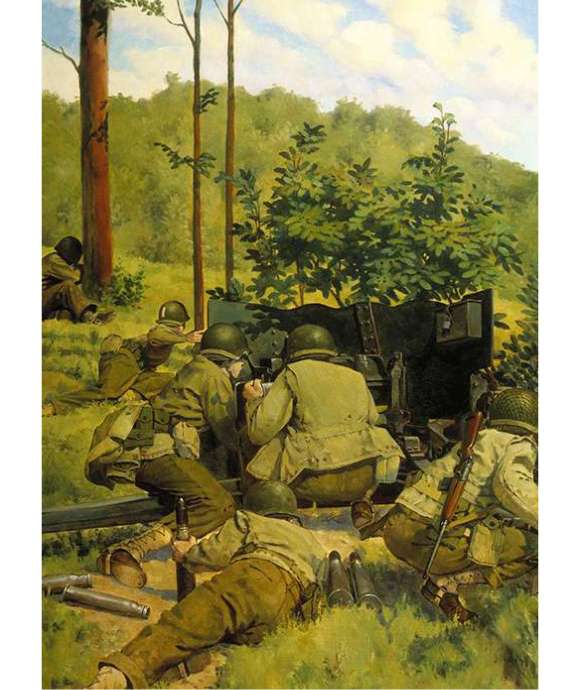
The 30th Infantry Division’s Heroic Stand at Mortain, August 1944
The US 30th Infantry Division receives the Presidential Unit Citation in honor of its heroism at the Battle of Mortain, August 1944.
Ed Lengel, PhD
Edward G. Lengel is the former Senior Director of Programs for the National WWII Museum’s Institute for the Study of War and Democracy.
Cite this article:
MLA Citation:
APA Citation:
Chicago Style Citation:
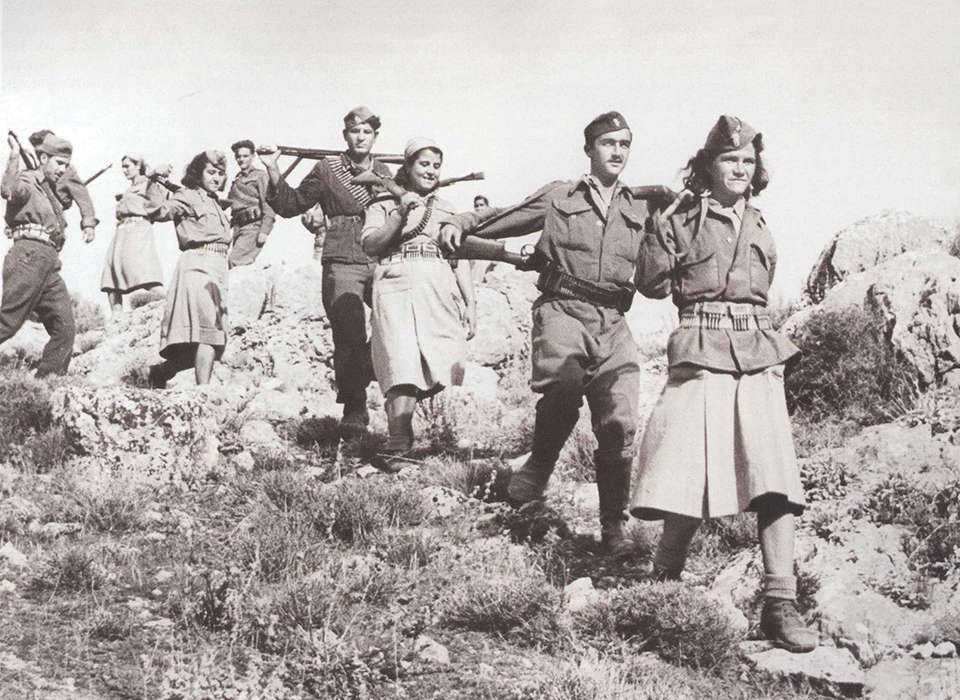
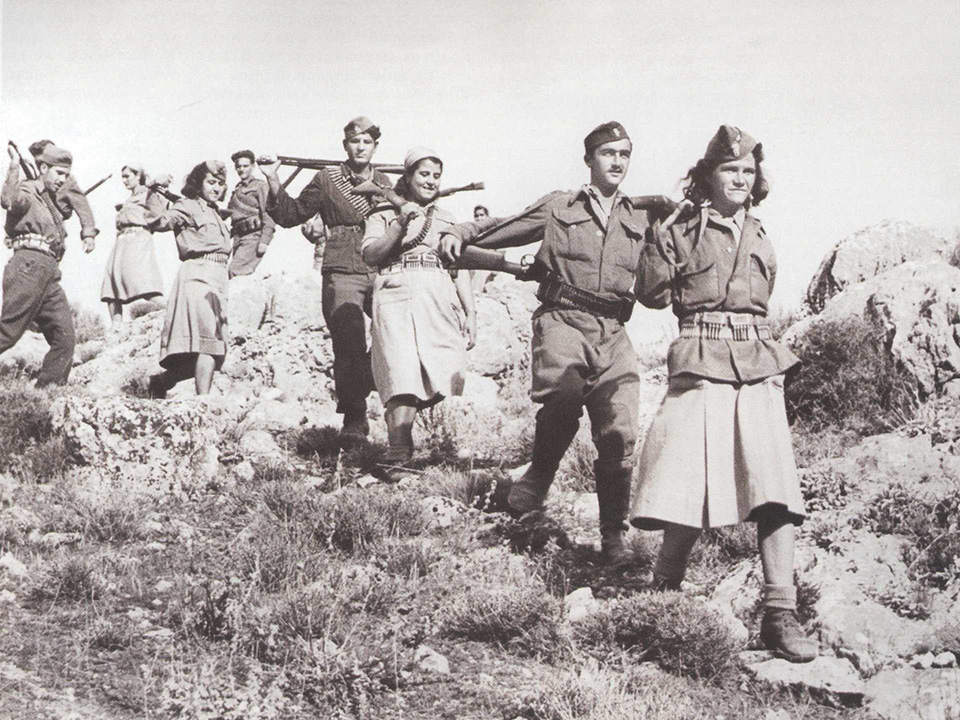
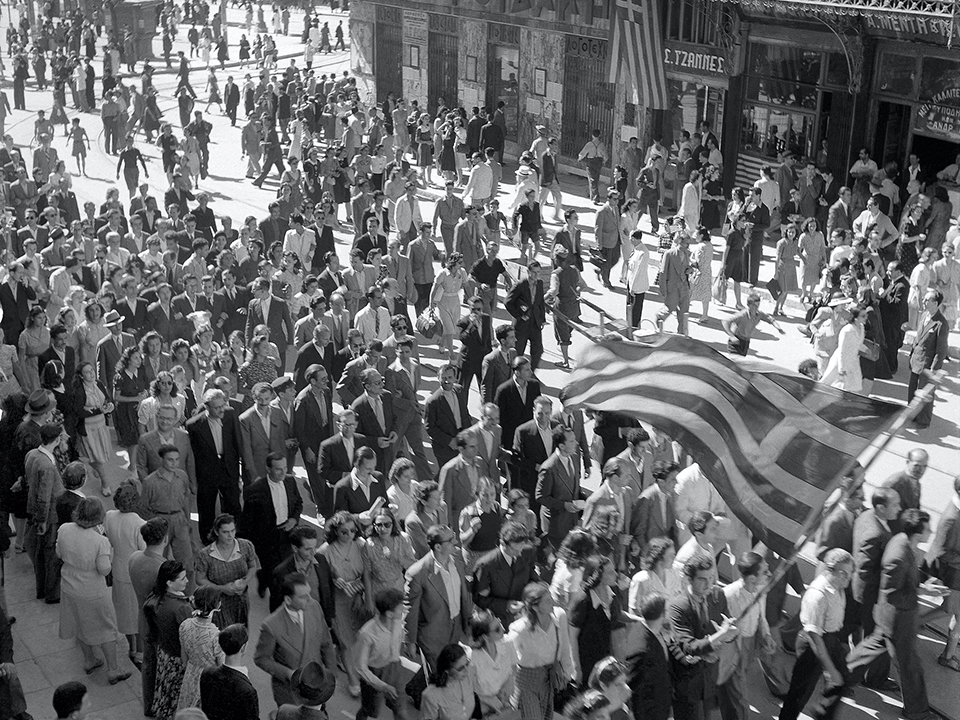
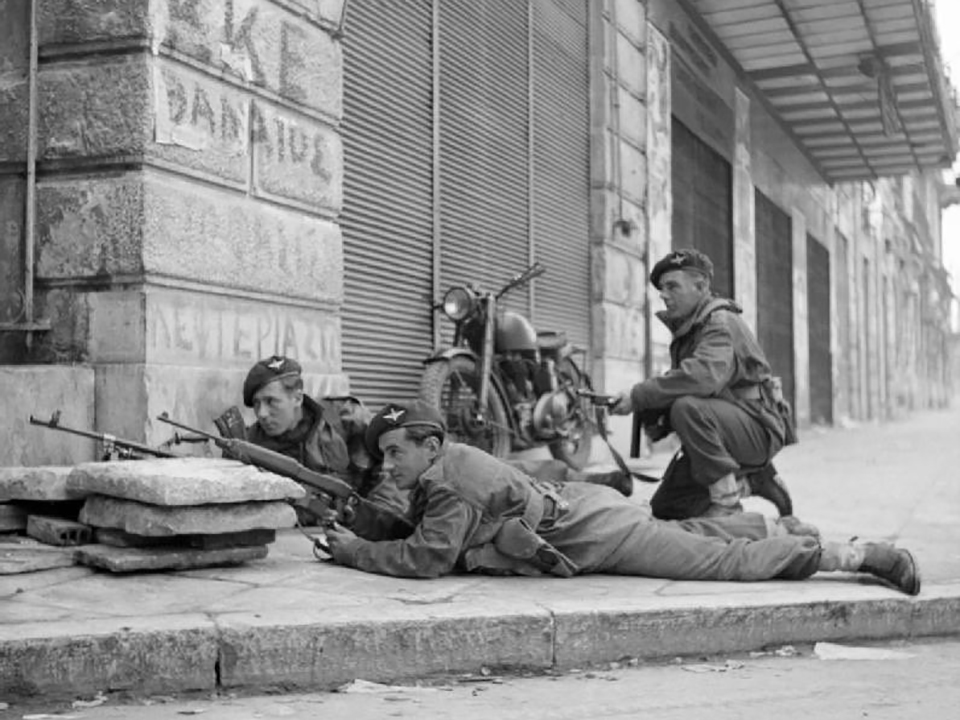
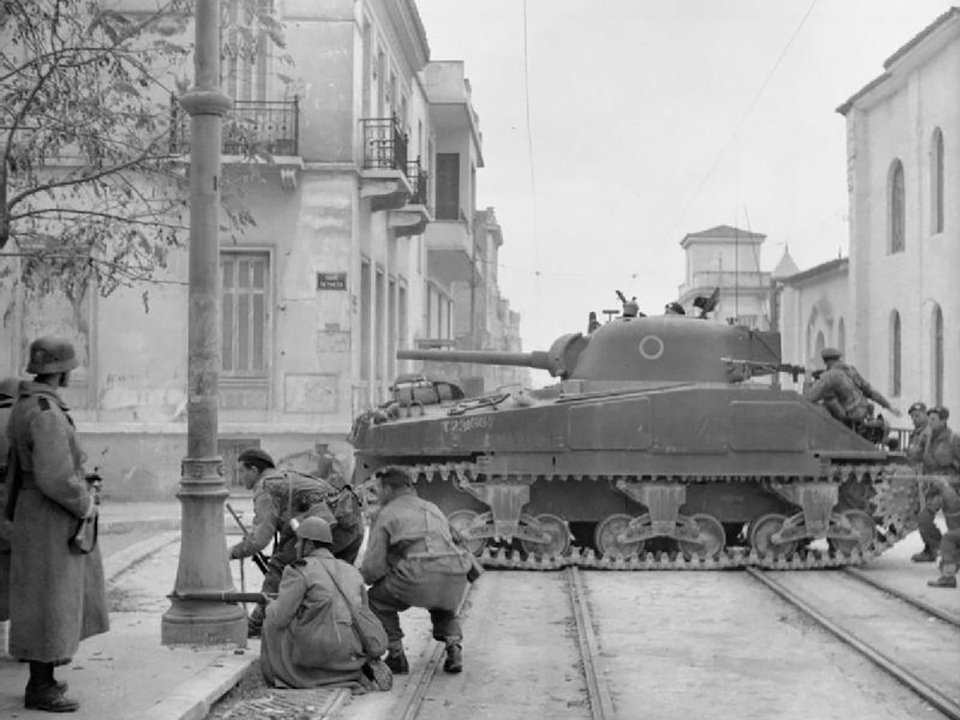
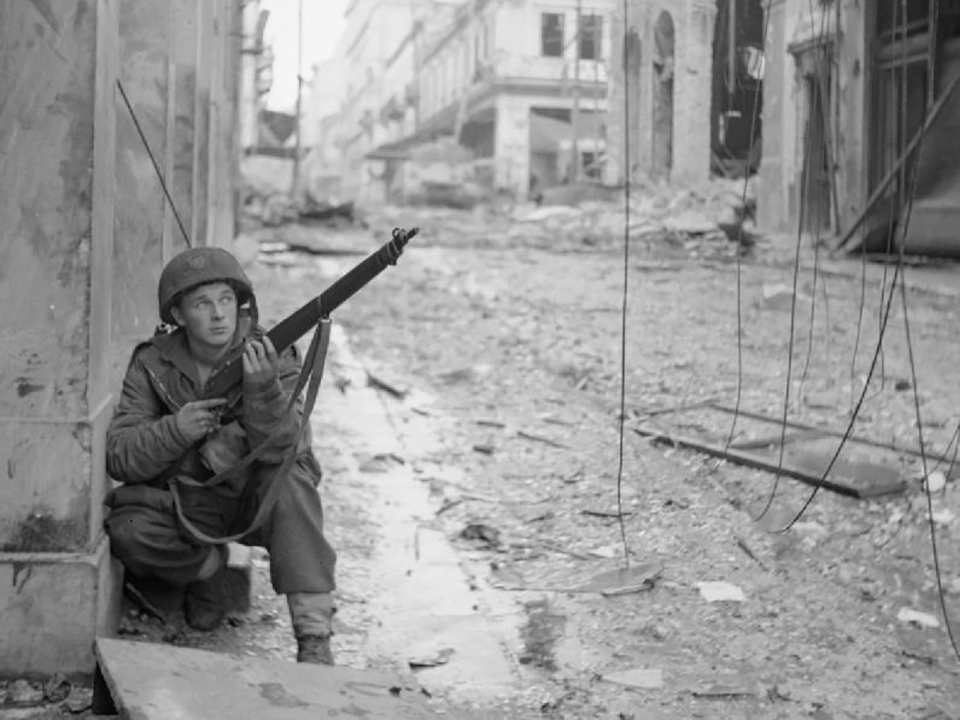
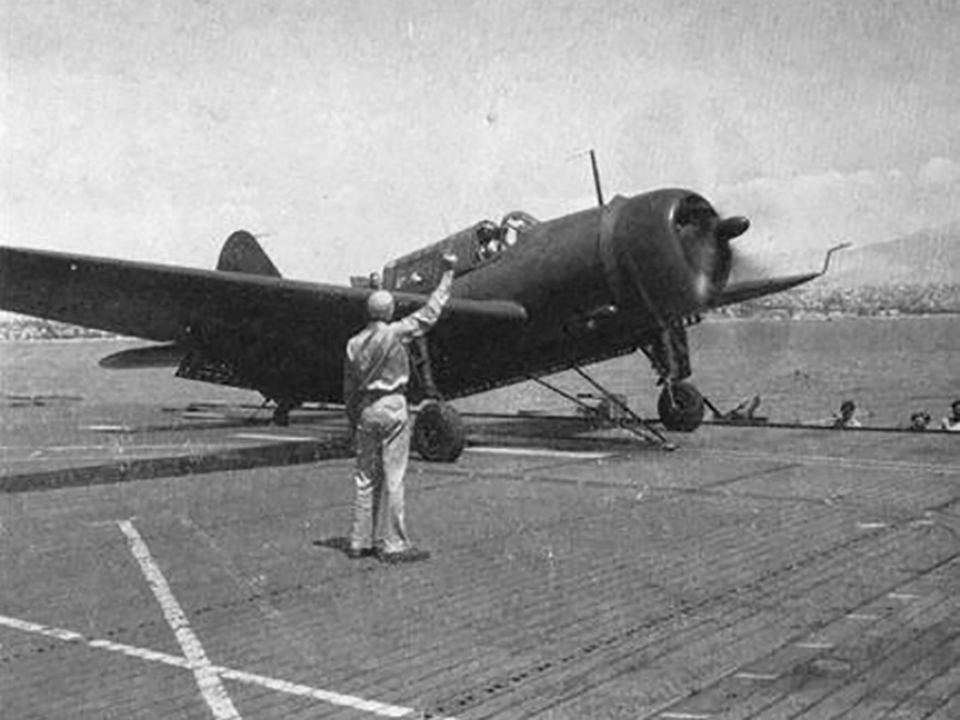




![Max Fuchs, New York City cantor, sings as Rabbi Sydney [sic] Lefkowitz, Richmond, VA, conducts the first Jewish services from Germany.](/sites/default/files/styles/max_650x650/public/2025-10/image1.jpg)



